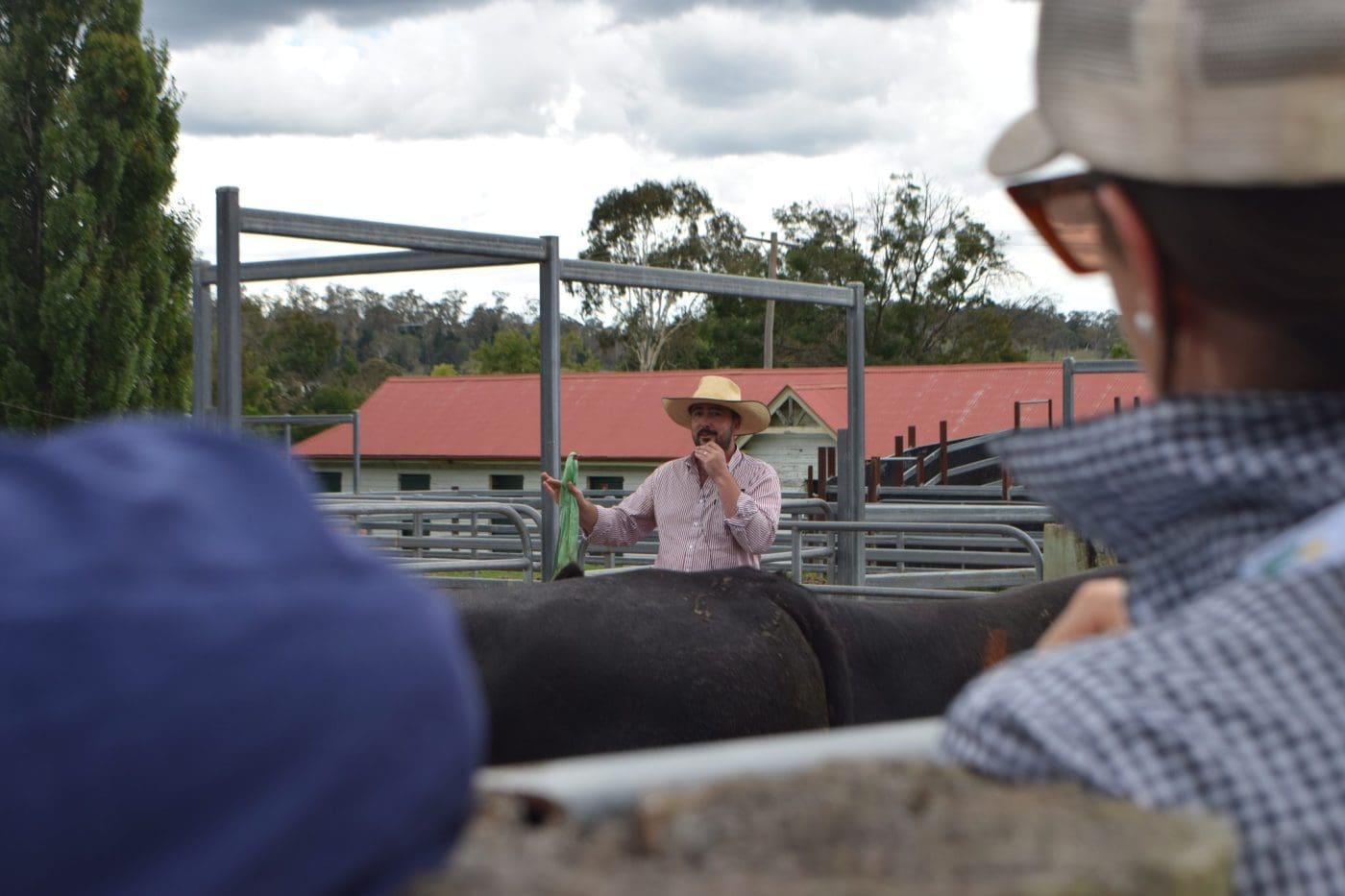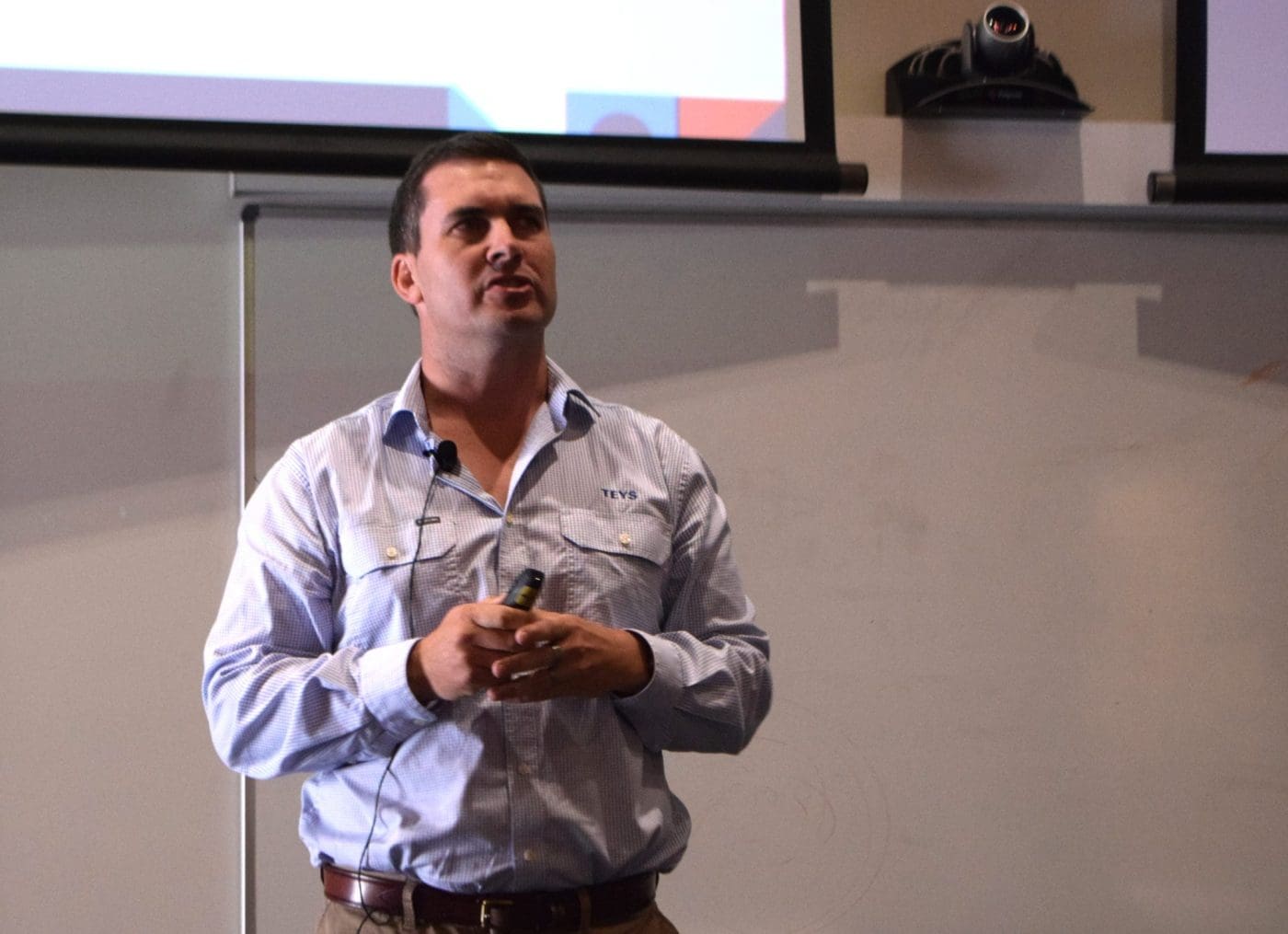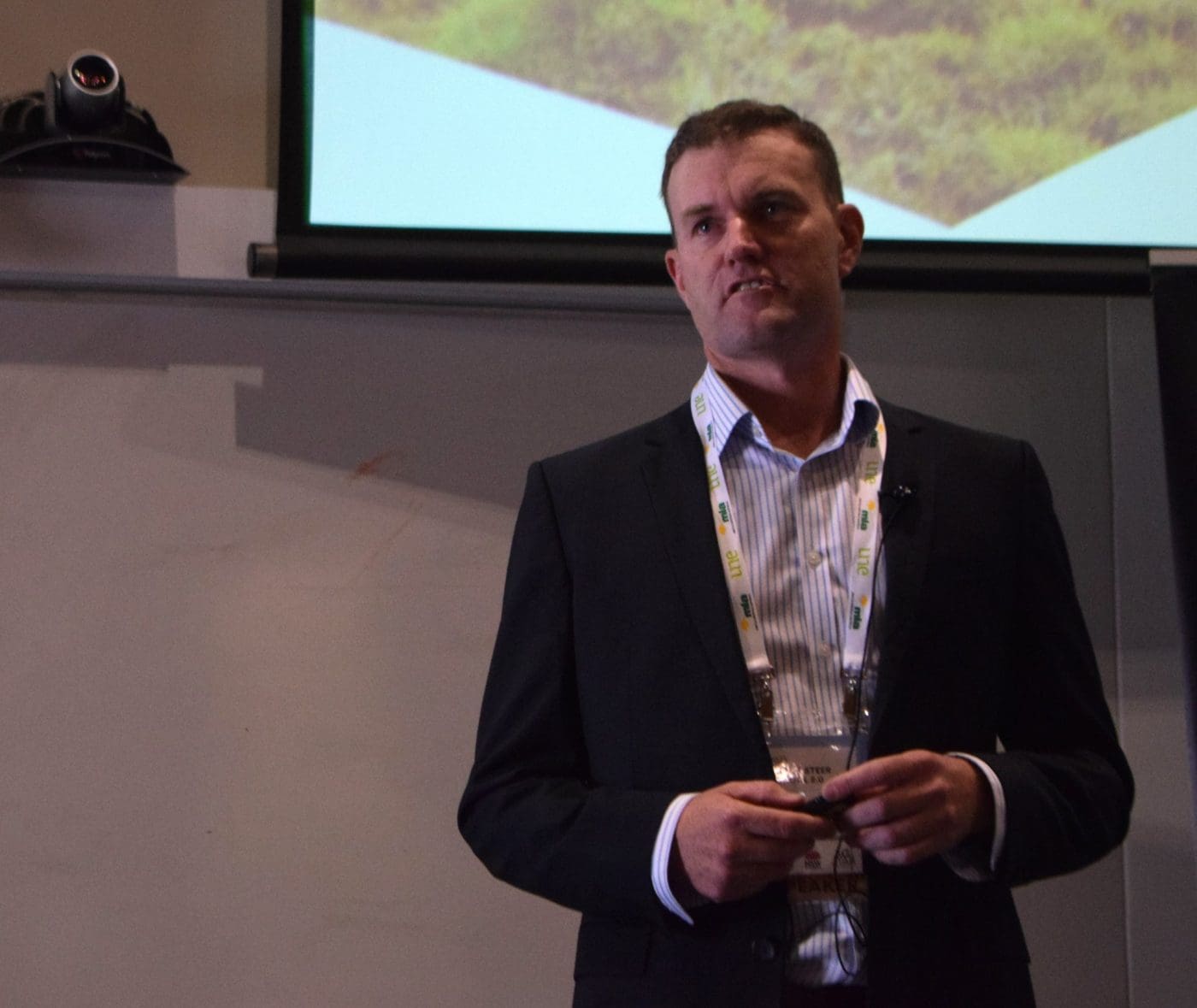
Angus Australia Jake Phillips giving a demonstration on bull selection at the Armidale Feeder Steer School.
IT was hard not to feel positive about the future of the Australian beef industry in Armidale this week, as more than 200 delegates gathered to learn the many ways they could extract more value out of producing cattle for Australia’s growing feeder market.
The school was revived by the University of New England after a 13-year hiatus, which provided an opportunity to reflect on the advances the industry had made over the years.
While there was a high-quality line up of speakers, the quality of the crowd was perhaps just as valuable – with a mix people who had been to school decades-ago and some of the industry’s up and coming talent.
The optimism for the future was best described by a conversation over dinner with Lydia and Cameron Hill from Clarkewood Station in Central Queensland. At 21 and 18 respectively, they were speaking with in-depth knowledge about carcase characteristics like eye muscle area and ossification and how management can influence them.
With the sheer amount of knowledge and enthusiasm in one place, Beef Central has extracted the top pieces of advice for extracting out of feeder cattle.
Temperament still top of the list
With all the dialogue genetic selection, animal health and sharing data across the supply chain, the discussion always came back to the preference for well-handled and quieter cattle.
Training weaners to go onto feed-bunks and how to sit in yards without becoming too stressed were constant themes among the speakers.
Angus Australia spoke about its Estimated Breeding Value for “docility”, which gave an indication of how a bull’s progeny will behave.
In a speech about vaccination programs and limiting health issues, Apiam Animal Health’s Jemma Postle said one of the best ways to mitigate health issues was to make sure animals had good nutrition through good management of weaners.
“Controlling the controllables is a term that comes to mind when considering preparing cattle for feedlot entry,”
“It is reducing stress and improving their adaptability to their future life.”
“Know your cattle”
As Meat & Livestock Australia general manager Michael Crowley pointed out, there is now a proliferation of brand programs that offer a chance to extract more value out of selling feeder cattle.
Several programs have been put in place to underpin these high value markets, like the National Feedlot Accreditation System and Meat Standards Australia.
Drilling further down was Teys’ national feedlot procurement manager Ethan Mooney, who had three main tips for marketing feeder cattle:
- Choose a market for your production focus
- There is value in branded programs
- Vaccination programs are aligned with premiums
Mr Mooney said knowing the characteristics of your cattle was the first thing to consider.
“Not everyone is going to fit a grainfed model and not everyone is going to fit a grassfed model,” Mr Mooney said.
“Know your cattle, it is about working out how your cattle perform or what information you can get to be able to think about how my cattle perform. Whether that is genomic data, carcase data from previous kills or feedback from previous feedlot entries and actually being able to understand what that means to make the best marketing decisions.”
While thinking about the limitations of country and genetics, Mr Mooney said it was also worth keeping an eye on global macro trends to help inform decisions.
“Five-years-ago if you had of told someone you were going to sell cube rolls, striploins and tenderloins into America that have done 150-days-on-feed – they would have laughed you out of the room,” he said.
“Now we are getting huge demand from America because they are going to be 1m tonnes short of meat.
“Keeping your ear to the ground about this type of information is really powerful.”
Consistency is key
Consistency was theme throughout the conference and has been one of the biggest drivers of the growth of the feedlot sector.
“Branded programs go back to consumer demands, consumer demands go back to consistency and consistency goes back to value,” Mr Mooney said.
“If we can get consistent supply and consistent eating quality then the value will maintain its consistency.”
A similar point was made by Mr Crowley, whose presentation was about the beef industry extracting more value than what it currently is.
“I have spent a fair bit of my time looking at a lot of carcase data and I can tell you it is the variation that kills us,”
“Reducing that variation and identifying those animals that are going to hit those grids more often than not is a big part of that.”
Mr Crowley said one of the keys to consistency was sharing information.
“I would love a seedstock producer to have a photo of the ribeye from the progeny of their animals,” he said.
“Or if a commercial producer can send the genomic prediction of their animals as they feed forward into the supply chain or you have objective measurement of quality traits going to supply chain.”
Animal health important for feedlots
Animal health is still one of the biggest challenges for the feedlot sector, with feedlots committing to limiting use of antibiotics the National Feedlot Accreditation System.
Several speakers addressed the different strategies they are putting in place to reducing the biggest health issue – being bovine respiratory disease.
Mr Mooney said there was premiums aligned with pre-vaccination programs. JBS has a mandatory pre-vaccination program.
Another presentation from Rangers Valley demonstrated how cattle that were backgrounded were returning less health issues.


